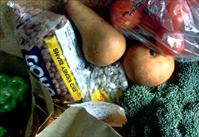 Digital News Report – Ways to reduce the risk of developing breast cancer was discussed on today’s ‘The Dr. Oz Show.’ The show discussed risk factors, and lifestyle changes that could reduce the risk for developing breast cancer.
Digital News Report – Ways to reduce the risk of developing breast cancer was discussed on today’s ‘The Dr. Oz Show.’ The show discussed risk factors, and lifestyle changes that could reduce the risk for developing breast cancer.
Dr. Ruth Oratz who is a Breast Oncologist was the first expert guest on the TV show that helped answer questions about breast cancer. She explained that exposure to estrogen is believed to be the most powerful risk factor for breast cancer. Only about 5 – 10 percent have a genetic risk.
Dr. Oz had a checklist that women can use to help determine if they have high amounts of estrogen exposure:
|
Dr. Oratz said that the most important factor women can control is weight and what they eat. She said that fat cells produce and store estrogen. More fat cells increase the amount of estrogen found in the body. Women that have over 45 pounds of weight have more than doubled their risk of developing breast cancer she explained.
Breast density is another concern. Dr. Oratz said that having dense breast tissue could mean that the breast tissue is more at risk for developing cancer. It is also more difficult to find the cancer. Women can find out if their breasts are dense by getting a mammogram. You cannot just feel it to determine this said Dr. Oz.
What age should women start getting their mammogram? Dr. Oratz said that the current guidelines suggest women start getting mammograms at age 40 and maybe earlier if they have increased risk factors. The recommendations could change as medical experts change their mind.
Sonography or a MRI are other options that can be used to help find breast cancer. Dr. Oratz said that the FDA recently approved digital tomosynthesis, which takes a 3D image of the breast to see the tiny abnormalities in the breast tissue.
Dr. Oratz said that women and especially younger women should do self-examinations for lumps. She said that that the breast tissue goes all the way up to under the arm and they should check the lymph nodes in the armpit for lumps. Dr. Oz said to be on the lookout for any changes in the way the skin looks, any if any rashes or any changes in textures of the breasts occur.
Foods that help to Reduce Breast Cancer Risk
|
The next segment on the show had Rachel who is a Registered Dietician share about foods that can be helpful at preventing breast cancer. There are three food groups that could help.
The first food group is to eat cruciferous vegetables such as broccoli, arugula, cabbage, cauliflower, and brussel sprouts. These vegetables contain sulforaphane compounds, which are believed to help prevent cancer. Rachel said she likes broccoli sprouts, because only a handful has as much sulforaphane as a pound of fully mature version of the produce.
The second food group is to eat folate rich foods such as eggs, spinach, asparagus, and oranges. Folate helps prevent DNA damage explained Dr. Oz. Rachel because it protects the cells. She continued to say that a recent study on folate found women with high levels on this nutrient had a 44 percent risk reduction for developing breast cancer. Rachel’s favorite folate rich food is to eat green sprouted lentils because it is inexpensive and is a fast food to make. She said that you would not get as much gas from the sprouted lentils than if you would eat them the regular way. She suggested adding some fresh-diced tomatoes to the sprouted lentils.
|
Fiber rich foods are the ultimate breast-cancer prevention foods Rachel said. She has a way to boost the fiber in oatmeal by making a fiber mixture that can be sprinkled on top of the hot cereal. Take cinnamon and granulated organic orange peel, white chia seeds and mix it together, and put it a spice shaker. Then you can sprinkle it on your oatmeal to boost fiber. One tablespoon of this mix will provide an extra 5 grams. Foods high in fiber include whole grain wheat and oats, pears, strawberries, and raspberries.
By: Robert Williams
Entertainment Reporter
